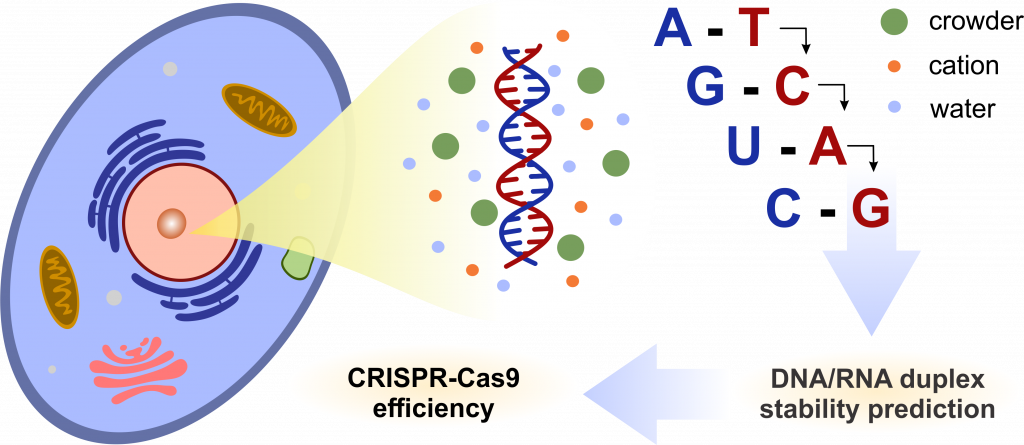A new tool to predict RNA/DNA duplexes stability in cells
|RNA/DNA hybrid duplexes formation is a crucial step of important biological processes, such as the initiation of replication, transcription elongation, and reverse transcription, and it is used as base for genetic therapy approaches, such as CRISPR-Cas9 and ASO gene silencing. However, if the stability of hybrid duplexes has been fully studied in vitro, these findings can hardly be applied to living cells, characterized by a heterogeneous distribution of biomolecules and cellular organelles that causes molecular crowding.

Dr Dipanwita Banerjee (FIBER-Frontier Institute for Biomolecular Engineering Research –Konan University, Japan), Dr Maria Toplishek (National Institute of Chemistry – Ljubljana, Slovenia) and colleagues studied the effects of these conditions on the thermodynamics and structures of the RNA/DNA hybrid duplexes, adding synthetic cosolutes and analyzing the solution with thermodynamic and Nuclear magnetic resonance (NMR) structural techniques available at the Slovenian CERIC partner facility in Ljubljana. Researchers then found that duplex stability is reduced under crowding conditions, and that this reduction varied significantly depending on the conformation of the hybrid duplex. They could then develop a set of parameters that predict the stability of hybrid duplexes with conformational dissimilarities under diverse crowding conditions in living cells.
These results allow to apply the predicted duplex stability to explain the biological processes in a living cell, and they could permit to successfully estimate the efficiency of the CRISPR-Cas9 and ASO techniques, helping to develop novel drug design methods and enhancing therapeutic options for cancer, neurological disorders and other diseases linked to RNA/DNA duplexes stability.
ORIGINAL ARTICLE:



